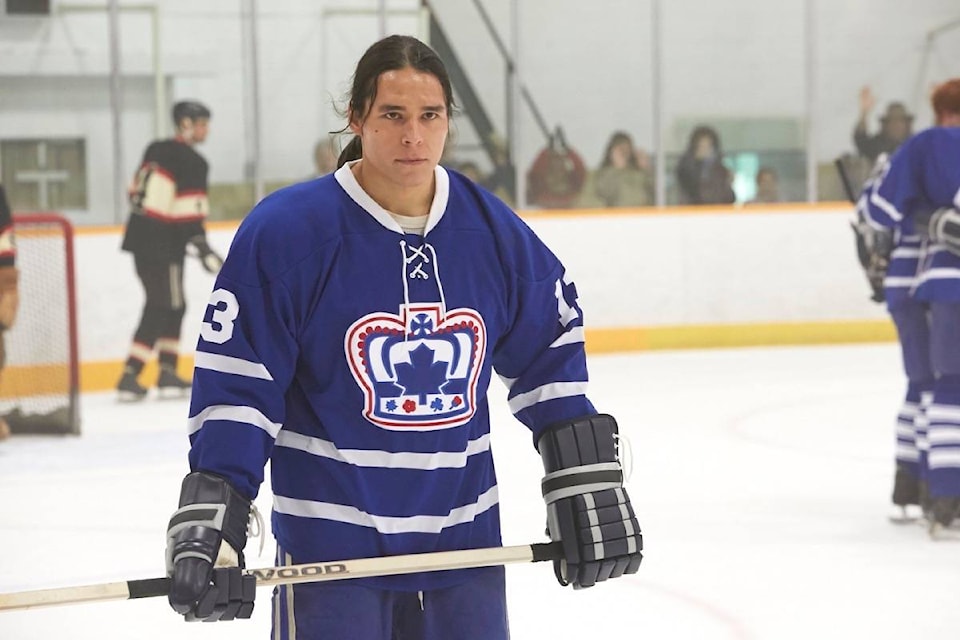The film Indian Horse is by no account an easy film to watch, as it deals with the deep and ongoing pain and suffering inflicted on First Nations people by Canada’s residential schools.
But, while depicting the country’s shame, the film is also about Canada’s pride and joy: hockey.
It’s a careful but effective mix that director Stephen Campanelli said he believes brings in a wider audience than a movie about the act and effects of cultural genocide otherwise would (the residential school system is described as such by the Truth and Reconciliation Commission). The NEWS spoke with Campanelli to discuss his work on Indian Horse in advance of the Beach Flicks screening of the movie, taking place Nov. 16 at Eaglecrest Golf Club (2035 Island Hwy., Qualicum Beach).
Campanelli, a camera operator who worked with Clint Eastwood, first read the book Indian Horse (written by Richard Wagamese) and the script (written by Dennis Foon) while filming his first movie, Momentum.
Indian Horse tells the story of Saul Indian Horse who, at the age of eight, is taken from his Ojibway (Anishnaabe) family and put in a residential school. He’s the witness and subject of terrible abuse, while he’s kept from speaking his language or practising his heritage. But Indian Horse finds an escape as he learns to play hockey, and develops into a talented player.
“It really hit me like a ton of bricks,” said Campanelli of the story. “I grew up in Canada, in Montreal and was never taught this (about residential schools) in school, so I was completely shocked and horrified that this happened in our own country, in our backyard, and that it was swept up under the rug.
“I immediately reacted and wrote a five-page, impassioned email to the producers saying why I wanted to be the person to direct this movie and that this story needed to be told, and told truthfully and honestly.”
In pushing to make the film, Campanelli had to satisfy Wagamese and the indigenous community that his team were the right people for the job (despite not being indigenous themselves) and convince backers that people wanted to see this film made.
Wagamese wholeheartedly gave his blessing, said Campanelli, and the production involved the indigenous community, including having elders on set “to make sure we got it right and respected everything that was in the book.”
It was also important to the team to cast First Nations actors who were either completely or relatively unknown, hoping audiences would recognize them first as their characters.
But finding support beyond First Nations was difficult at times.
“It was very tough to get people behind it,” said Campanelli. “It took almost five years for people to want to see this movie made, you know. There is still a lot of pushback and racism about seeing a First Nations, or as they called it, an Indian movie.”
Though, once the movie was made, the hockey component of the film likely attracted a wider audience, said Campanelli.
Being able to tell a story about Canada’s shame, the residential schools, but also its pride, hockey, was one of Wagamese’s many achievements with his book, said Campanelli.
“Putting them both together in one movie is very tricky, but I would put that all back to Richard Wagamese who wrote this story,” he said. “As he said, and he’s quoted as saying, ‘I was just trying to write a simple little hockey story.’”
“It’s pretty amazing that he managed to capture the essence and the beauty of Canada’s national game with the horrific nature of the residential schools.”
Campanelli sought to do the same with the movie, showing hockey as being an escape for the story’s main character, Saul Indian Horse (played at different ages by Sladen Peltier, Forrest Goodluck and Ajuawak Kapashesit), as outdoor activity often was for children in residential schools, said Campanelli. But an escape is not enough to overcome the damage done by the residential schools, he said.
Campanelli said he’s proud of the movie and what it’s doing to tell the history of the residential schools to more people.
The Beach Flicks screening of the movie takes place Nov. 16 at Eaglecrest Golf Club starting at 7 p.m. Ticket price is $7 a seat, with sales starting at 5:45 p.m.
For more info, go to beachflicks.ca.
